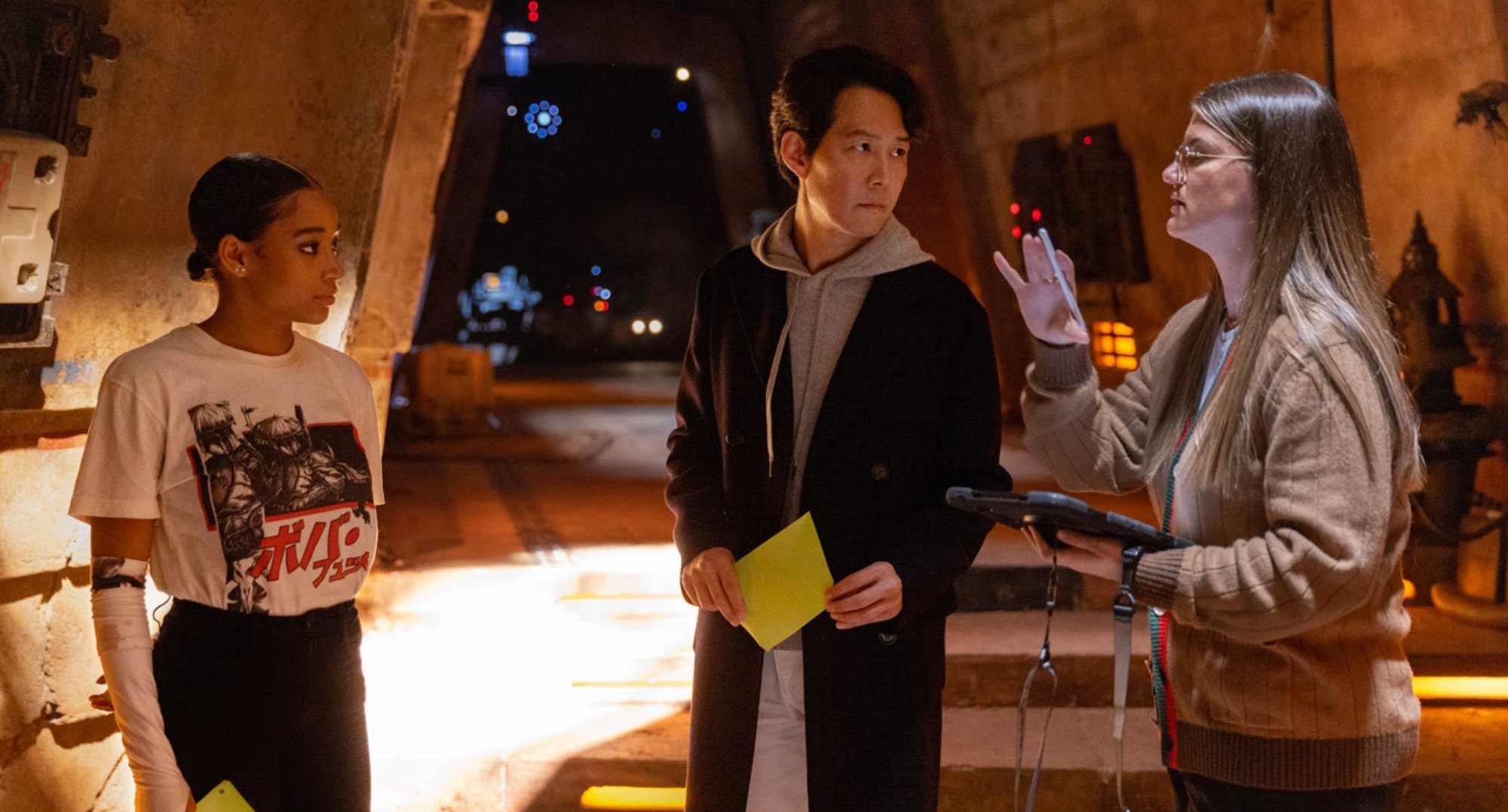Historical Significance of “The Acolyte Time”

The term “The Acolyte Time” refers to a period in Indonesian history between the late 1950s and the mid-1960s, characterized by significant political, social, and cultural changes. It was a time of great intellectual and artistic ferment, as well as political upheaval and violence.
In the realm of the acolyte time, where shadows dance and secrets whisper, the echoes of Mandisa’s demise linger like a mournful melody. Her untimely departure, shrouded in mystery, has left an enigmatic void that begs for answers. As the acolytes delve deeper into the labyrinth of her passing, the path leads to a revelation that will forever alter the course of the acolyte time.
Amidst the sacred rituals and arcane knowledge, the acolytes stand on the precipice of a profound transformation.
The origins of “The Acolyte Time” can be traced back to the aftermath of Indonesia’s independence in 1945. The country was struggling to establish a stable and democratic government, and there was widespread dissatisfaction with the political establishment. This dissatisfaction was particularly strong among young people, who felt that the older generation had failed to deliver on the promises of independence.
The Acolyte is a new Star Wars series that has been met with mixed reviews. While some critics have praised the show’s visuals and performances, others have criticized its pacing and lack of originality. For a more in-depth look at the critical consensus, check out acolyte rotten tomatoes.
Despite the mixed reviews, The Acolyte is still a must-watch for any Star Wars fan. The show’s visuals are stunning, and the performances are top-notch. If you’re a fan of Star Wars, then you’ll definitely want to check out The Acolyte.
In 1959, a group of young intellectuals and artists founded the literary magazine Sastra (Literature). Sastra quickly became a platform for the expression of new ideas and perspectives, and it played a major role in shaping the intellectual and cultural landscape of “The Acolyte Time.”
The acolyte time is a period of intense spiritual growth and transformation. During this time, the acolyte is guided by a master teacher, who provides instruction and support. One such master teacher is Master Indara , a renowned spiritual teacher and healer.
Master Indara’s teachings focus on the development of inner peace, compassion, and wisdom, and she has helped countless acolytes on their spiritual journeys. The acolyte time is a challenging but rewarding experience, and it can lead to a profound transformation in one’s life.
Significant Events and Figures
- The publication of Sastra magazine in 1959.
- The founding of the People’s Cultural Institute (Lekra) in 1950.
- The outbreak of the Indonesian-Malaysian Confrontation in 1963.
- The attempted coup d’état by the Indonesian Communist Party (PKI) in 1965.
Some of the most significant figures associated with “The Acolyte Time” include:
- Pramoedya Ananta Toer, a novelist and short story writer.
- Chairil Anwar, a poet.
- Asrul Sani, a poet and filmmaker.
- Usmar Ismail, a filmmaker.
Cultural and Societal Impact, The acolyte time
“The Acolyte Time” had a profound impact on Indonesian culture and society. It was a time of great intellectual and artistic ferment, and it produced some of the most important works of Indonesian literature, art, and film.
The cultural and societal impact of “The Acolyte Time” can still be seen today. The works of the writers and artists of this period continue to be read, studied, and enjoyed by Indonesians of all ages.
Cultural Influences and Symbolism

The Acolyte Time has exerted a profound influence on cultural production across the ages. Its themes, motifs, and symbols have resonated with artists, writers, and musicians, inspiring a vast body of works that reflect the period’s unique spirit and worldview.
Literary Influences
- The Gothic Novel: The Acolyte Time’s fascination with the supernatural and the macabre found expression in the Gothic novel, a genre characterized by its dark, atmospheric settings and tales of horror and mystery.
- Romanticism: The Romantic movement in literature emphasized the importance of emotion, imagination, and the individual experience. Many Romantic writers drew inspiration from the Acolyte Time’s focus on the inner life and the exploration of the human psyche.
- Symbolism: The use of symbols and allegories was prevalent in Acolyte Time literature, allowing authors to convey complex ideas and emotions through evocative imagery.
Artistic Influences
- Pre-Raphaelite Brotherhood: This group of British artists sought to revive the techniques and aesthetics of medieval art, drawing inspiration from the Acolyte Time’s emphasis on religious symbolism and detailed craftsmanship.
- Art Nouveau: This decorative style emerged in the late 19th century, characterized by its flowing, organic forms and stylized motifs that often evoked the Acolyte Time’s fascination with nature and the mystical.
- Expressionism: This artistic movement emphasized the expression of inner emotions and experiences, often using distorted forms and vibrant colors to convey the psychological turmoil of the Acolyte Time.
Musical Influences
- Gregorian Chant: The monophonic, unaccompanied chant used in the Acolyte Time’s religious ceremonies has influenced Western music throughout history, particularly in choral and liturgical works.
- Medieval Polyphony: The development of polyphonic music, where multiple independent melodies are sung simultaneously, began in the Acolyte Time and reached its peak in the Renaissance.
- Opera: The origins of opera can be traced back to the Acolyte Time’s liturgical dramas, which combined music, drama, and religious themes.
Contemporary Resonance
The Acolyte Time continues to resonate in contemporary culture, with its themes and motifs finding expression in various forms of art and entertainment.
- Gothic Revival: The Gothic aesthetic has been revived in popular culture, particularly in horror films and television shows.
- Fantasy and Science Fiction: The Acolyte Time’s fascination with the supernatural and the unknown has influenced many fantasy and science fiction works, creating imaginative worlds that draw upon the period’s rich symbolism.
- New Age Spirituality: The Acolyte Time’s emphasis on the mystical and the spiritual has found resonance in contemporary spiritual movements, particularly those that explore alternative forms of spirituality and consciousness.
Contemporary Relevance and Interpretations: The Acolyte Time

In contemporary times, “The Acolyte Time” continues to resonate and be reinterpreted in various contexts, reflecting its enduring relevance and the enduring appeal of its themes and ideas. Artists, writers, and filmmakers have drawn inspiration from the novel, adapting it to explore contemporary societal issues and concerns.
Comparative Analysis of Contemporary Interpretations
Contemporary interpretations of “The Acolyte Time” vary in their approaches and emphases, reflecting the diverse perspectives and artistic sensibilities of the creators. Some adaptations focus on the novel’s exploration of identity and belonging, while others delve into its themes of power and resistance. Still, others explore the novel’s psychological and spiritual dimensions.
- Film Adaptation: The 2018 film “The Acolyte” is a loose adaptation of the novel that transposes its themes and characters into a contemporary setting. The film follows a young woman who becomes entangled in a secret society and grapples with questions of identity and power.
- Graphic Novel: The 2020 graphic novel “The Acolyte: A Graphic Novel” adapts the novel’s story into a visual medium, exploring its themes of identity and belonging through striking imagery and evocative storytelling.
- Stage Adaptation: A 2021 stage adaptation of “The Acolyte” premiered in London, exploring the novel’s themes of power and resistance through a contemporary lens. The adaptation used innovative staging and multimedia elements to create an immersive and thought-provoking theatrical experience.
These contemporary interpretations demonstrate the enduring relevance of “The Acolyte Time” and its ability to inspire and resonate with audiences across generations and cultures.
The Acolyte, a highly anticipated Star Wars series, takes viewers back to the final days of the High Republic era. For those eager to immerse themselves in this captivating tale, watch the acolyte online free and witness the unfolding events that shape the destiny of the galaxy.
As the series delves into the secrets and power struggles of the Acolyte, fans can expect an enthralling journey that connects the past and future of the Star Wars universe.
In the hallowed halls of the acolyte time, where secrets whisper through ancient texts, a beacon of modernity emerges. The starliner launch heralds a new era, where celestial mysteries unravel before our very eyes. Yet, as the heavens beckon, we must not forget the wisdom of our ancestors, the echoes of their knowledge reverberating through the ages, guiding us through the uncharted territories of time and space.